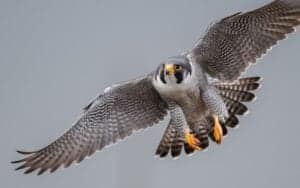South Carolina winters are mild, and many types of birds find it the ideal place to spend the season. Here are eight birds that winter in South Carolina. The conservation status of these birds is least concern.
1. American Robin
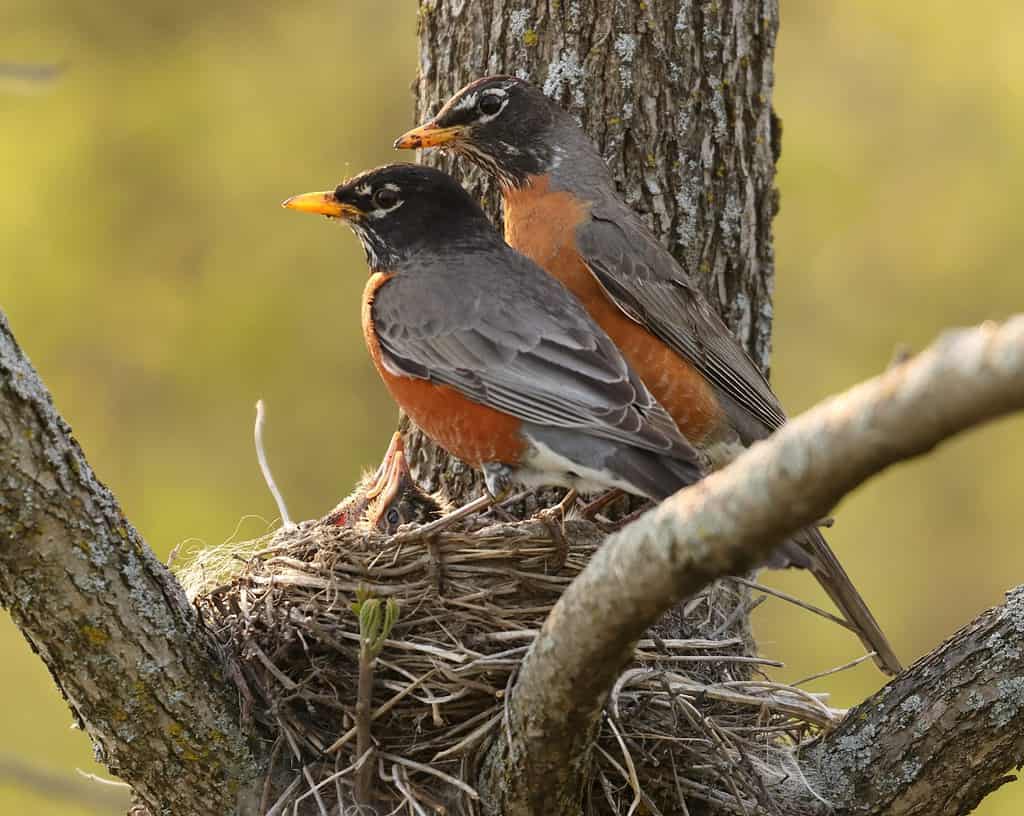
Robins may be harbingers of spring, but you can find them in South Carolina during the winter.
©yvontrep/Shutterstock.com
The robin, Turdus migratorius, is North America’s most common thrush and is instantly recognizable by the adult bird’s red breast. You’ll find this bird in woods, fields, and your garden, where it builds its nest in shrubs and small trees. The robin also lays famously sky-blue eggs. America’s largest thrush, the robin ranges in length from 9 to 11 inches, with males being just a little bigger and more colorful than females.
2. American Goldfinch
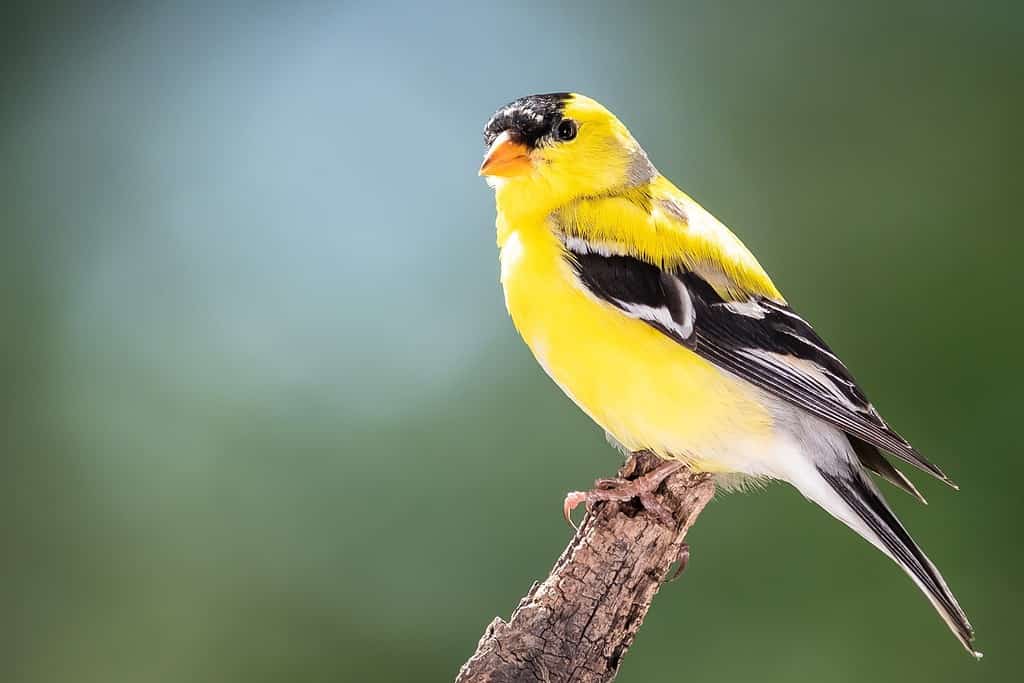
The male American goldfinch has brilliant yellow plumage.
©rck_953/Shutterstock.com
Like the robin, the American goldfinch is common throughout North America and prefers fields, gardens, orchards, and farms. Carduelis tristis loves fields full of weeds and brush. The male is bright yellow or gold with a black crown, wings and tails. The females are olive brown with a dull yellow underside. These little finches range from 4 to 5 inches long. They eat grains and seeds and will happily come to a feeding station in the winter if you set one up.
3. Blue Jay
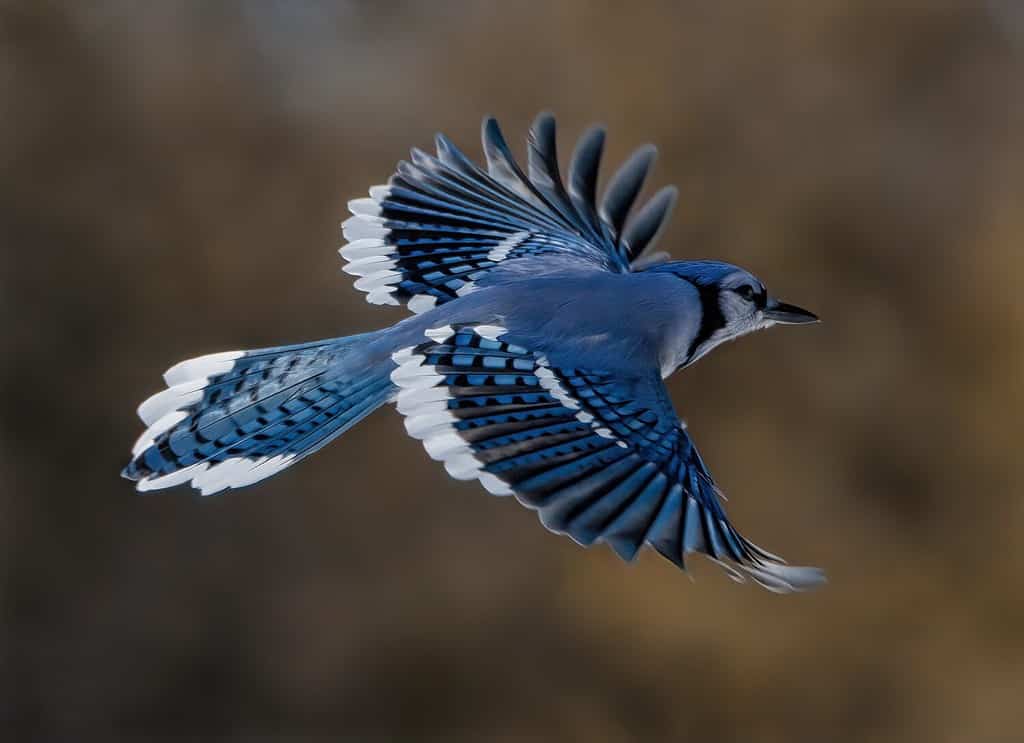
The blue jay’s blue coloration isn’t due to pigment but to the way the light plays on the feathers.
©Fiona M. Donnelly/Shutterstock.com
Known for both its deceptively blue plumage and unmistakable call, the blue jay (Cyanocitta cristata) is a common bird of the Nearctic realm, which covers most of Canada, the United States, Greenland, and the Mexican highlands. The blue jay prefers mixed deciduous and coniferous woods with glades and often frequents parks and suburbs. It’s a large songbird, with a length of between 8 to nearly 12 inches, and males are a bit larger than females. The diet of blue jays is mostly comprised of acorns, nuts, and soft fruit like that of the Virginia creeper. Interestingly, their bright blue plumage is deceptive. It’s not caused by pigment but by a play of light on the feathers!
4. Brown Thrasher

The brown thrasher is the only thrasher that lives west of the Rocky Mountains.
©iStock.com/johnandersonphoto
This bird, the only thrasher found east of the Rockies, also spends its winters in South Carolina. Thrashers are songbirds that get their name because of the way they thrash their tail in leaf litter to stir up their insect prey. Toxostoma rufum prefers warmer climates and lives on farms, the edges of forests, and thickets. The bird is related to the mockingbird and is a fair mimic. It too is a large songbird with a length of between 9.25 and 12 inches. Brown thrashers have a brownish red dorsal area, a white ventral area, a yellow beak, yellow eyes, and a tail that is long and black. Males and females look alike.
5. Chickadee
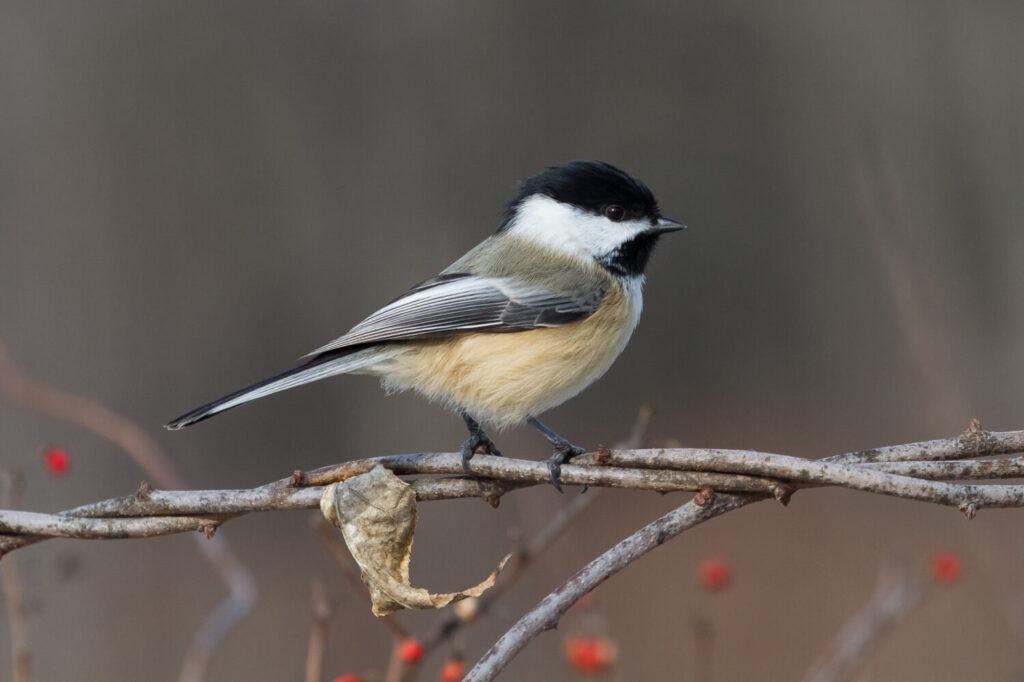
The little
chickadee
is built for winters much harsher than those of South Carolina.
©Paul Roedding/Shutterstock.com
Chickadees are members of the Poecile genus, named for the sound of their alarm call. There are several species, and all are native to North America and very common. They prefer mixed forests, thickets, groves, parks, and disturbed areas. Chickadees are small, round birds, between 2 and 5.5 inches long, and most have a dark crown and throat patch with a little, sharp beak and black legs. You can’t tell males from females just by looking. Chickadees cache their food, which is made up of both animal and plant material, and those who live in harsher climates are better able to remember where they hid a meal.
6. Carolina Wren

The Carolina wren is the state bird of South Carolina.
©Steve Byland/Shutterstock.com
Carolina wrens are not just fans of South Carolina during the winter; they are year-round residents. They reside in habitats from woodlands to clearcuts, thickets, farms, gardens, hummocks, and swamps. A bold but small bird, it ranges between 4.72 to 5.5 inches long. Thryothorus ludovicianus has a rufous back and a lighter colored ventral area, white chin and throat, and black bars on its tail and wings. Both sexes look alike, but males are a little bit heavier and have longer beaks and tails. There are four subspecies. Carolina wrens eat insects and spiders. They use their beaks to scrabble through leaves, rotting logs, and under the bark of trees to search for prey.
7. Blue-Headed Vireo
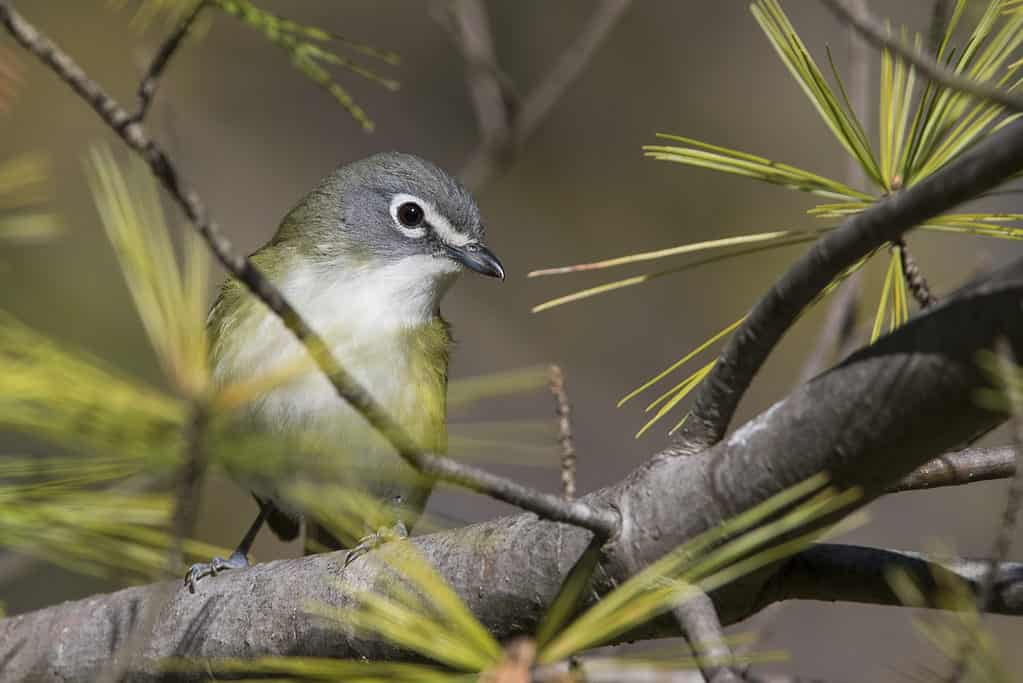
Blue-headed vireos usually eat insects, but they’ll eat fruit during the winter.
©iStock.com/mirceax
Vireo solitarius, or the blue-headed vireo, is found in the southern United States and down into Mexico and parts of Central America. In winter, it resides in swamps, forests, and thickets. The blue-headed vireo has a gray blue head and olive greenback with gray, white, and yellow stripes on its wings and tail. Its underside is mostly white, and both sexes look alike. The bird is 5.45 to 6.13 inches long. It’s an insectivore, but since insects are scarce even in South Carolina’s winters, the bird eats fruit during the cold season.
8. American Crow
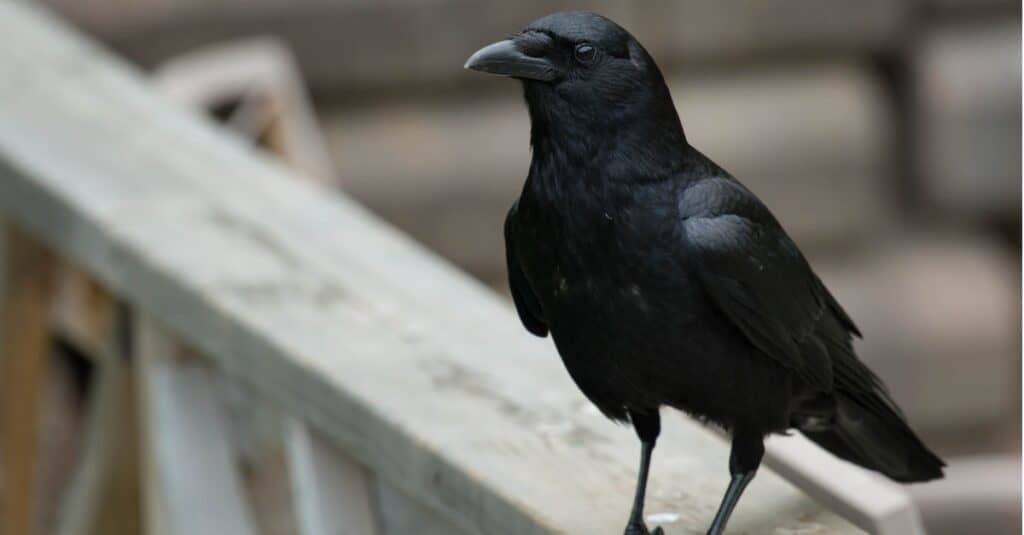
Crows are omnivores, but they eat nuts and acorns during South Carolina’s winter.
©iStock.com/PaulReevesPhotography
Like the Carolina wren, the American crow (Corvus brachyrhynchos) is found in South Carolina all year, as well as during the winter. This clever bird, which is believed to be as intelligent as a gorilla, is known for its iridescently black plumage and distinctive call. Crows prefer to live in savannas, scrub forests, forest edges, city parks, suburbs, and open places. Some people confuse crows with ravens, but ravens are considerably larger than crows and have heavier beaks and harsher calls.
Crows are large for passerines at 16 to 20 inches long. Though they’re famous for their usual call, they’re also good mimics. Crows are notorious omnivores, but in the winter their diet is mostly made of acorns and other nuts, which they cache. A crow opens a nut by holding it under its foot and hitting it with its beak, dropping it from a height, or placing it in the middle of a road and letting a car run over it!
Thank you for reading! Have some feedback for us? Contact the AZ Animals editorial team.






